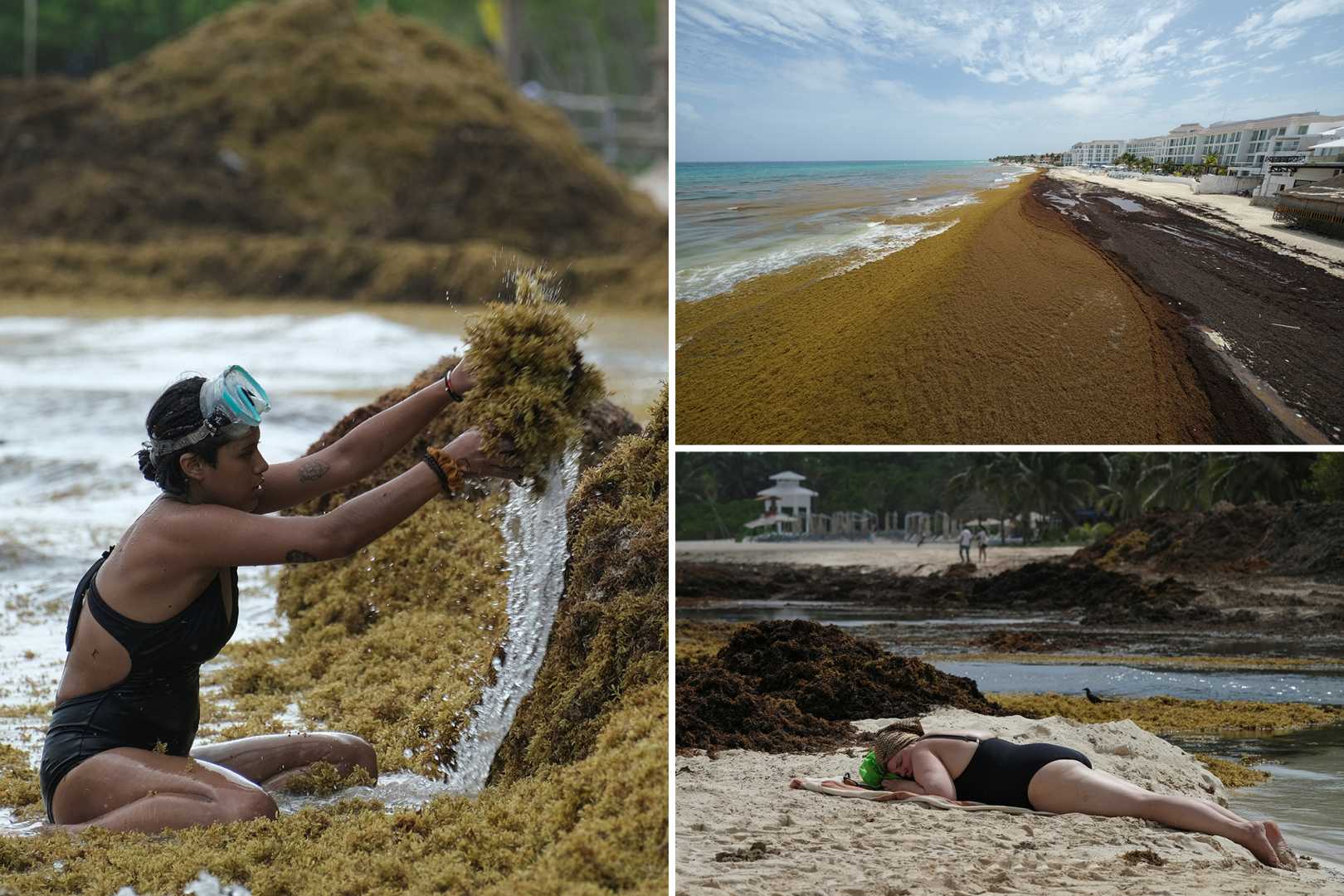News
Record Sargassum Seaweed Blooms Threaten Caribbean Resorts

ST. PETERSBURG, Florida — A record-breaking 37.5 million metric tons of seaweed were detected in May, raising concerns among biologists that some Caribbean resorts may soon be blanketed by this natural phenomenon. The data comes from the University of South Florida’s Optical Oceanography Lab, marking the largest amount of Sargassum detected in the Atlantic basin since monitoring began in 2011.
Researchers noted, “As predicted last month, while the spatial distribution patterns of Sargassum remained stable, the amount in each region increased considerably in May.” Historical records show that in every area except the Gulf of Mexico, Sargassum levels have exceeded past records, rising from 31 million tons in April to 37.5 million tons in May.
Small quantities of the seaweed have already appeared on some Gulf Coast beaches in Florida, leading experts and visitors to speculate on when larger blooms might wash ashore. The Florida Keys typically see widespread Sargassum in late spring, with even greater impacts expected across the Florida peninsula during summer and fall.
In eastern Puerto Rico, photos and videos captured waterways and beaches swathed in the seaweed, indicating a long season ahead. USF staff emphasized that while 2025 marks a record for Sargassum quantities, local factors, such as wind and ocean currents, significantly influence specific beach impacts.
The causes of these growing blooms remain unclear. Researchers suggest possible contributors include climate change, fertilizer runoff, and deforestation in South America. While the seaweed may emit unpleasant odors, health experts say it poses little risk to humans. However, it can adversely affect tourism, turning popular beaches into less desirable destinations.
In response, the Mexican government has prioritized discovery and containment in nearly four dozen appealing beaches along the Yucatán Peninsula and Caribbean coast. Typically washing ashore from April to October, the upswing in seaweed presence has become increasingly alarming due to climate change effects.
It remains uncertain whether Florida will experience a repeat of last year’s severe Sargassum coverage. Experts anticipate that growth will continue through June, particularly in the western Caribbean and Gulf. Some marine life benefits from the brown algae, as it provides food and shelter for small fish, crabs, and shrimp.












